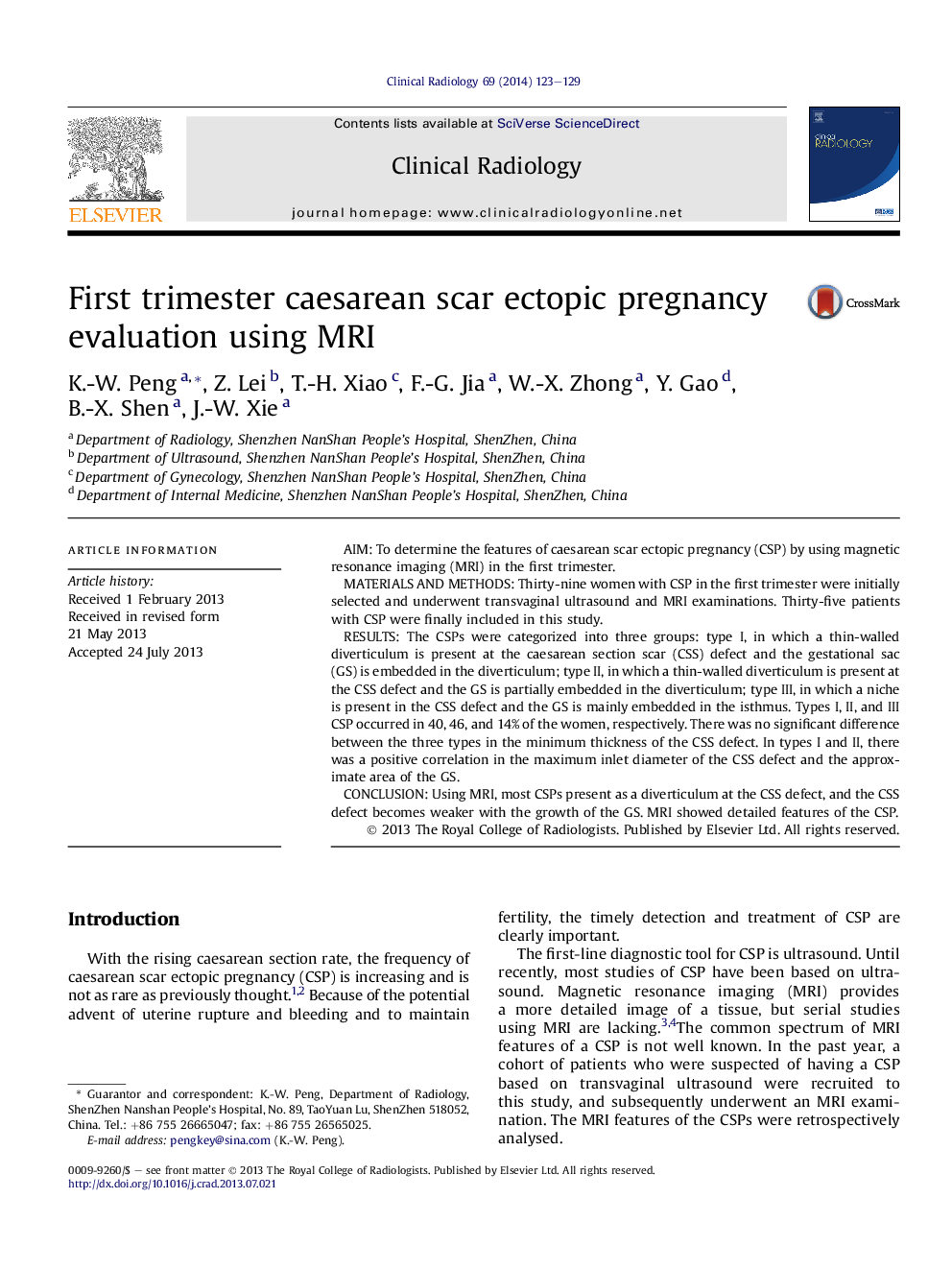| Article ID | Journal | Published Year | Pages | File Type |
|---|---|---|---|---|
| 3981472 | Clinical Radiology | 2014 | 7 Pages |
AimTo determine the features of caesarean scar ectopic pregnancy (CSP) by using magnetic resonance imaging (MRI) in the first trimester.Materials and methodsThirty-nine women with CSP in the first trimester were initially selected and underwent transvaginal ultrasound and MRI examinations. Thirty-five patients with CSP were finally included in this study.ResultsThe CSPs were categorized into three groups: type I, in which a thin-walled diverticulum is present at the caesarean section scar (CSS) defect and the gestational sac (GS) is embedded in the diverticulum; type II, in which a thin-walled diverticulum is present at the CSS defect and the GS is partially embedded in the diverticulum; type III, in which a niche is present in the CSS defect and the GS is mainly embedded in the isthmus. Types I, II, and III CSP occurred in 40, 46, and 14% of the women, respectively. There was no significant difference between the three types in the minimum thickness of the CSS defect. In types I and II, there was a positive correlation in the maximum inlet diameter of the CSS defect and the approximate area of the GS.ConclusionUsing MRI, most CSPs present as a diverticulum at the CSS defect, and the CSS defect becomes weaker with the growth of the GS. MRI showed detailed features of the CSP.
